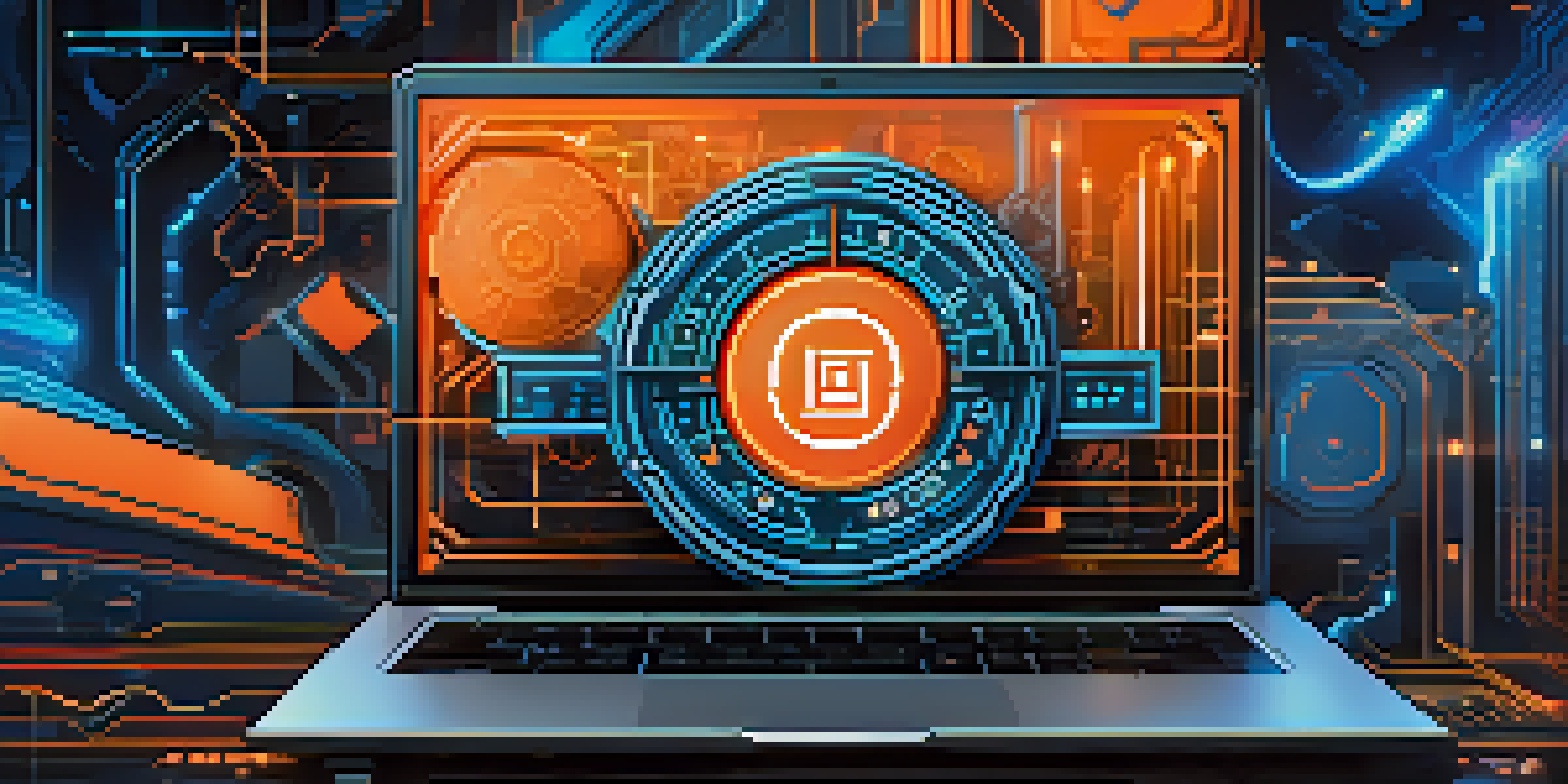NFTs in Education: Credentialing and Digital Badges

Understanding NFTs and Their Role in Education
NFTs, or non-fungible tokens, are unique digital assets verified using blockchain technology. Unlike cryptocurrencies like Bitcoin, which are interchangeable, NFTs represent ownership of a specific item or piece of content. In the education sector, NFTs can be used to create verifiable credentials that are tamper-proof and easily accessible.
Education is the most powerful weapon which you can use to change the world.
This innovation is particularly valuable for students and educators alike, as it allows for a more transparent way to showcase achievements. Imagine a world where your diploma or certificate can be securely stored and shared with just a link. This not only simplifies the verification process but also enhances the credibility of educational accomplishments.
Furthermore, the rise of remote learning has highlighted the need for reliable credentialing methods. As more institutions embrace online education, NFTs provide a solution that can bridge the gap between traditional education and the evolving digital landscape.
Digital Badges: The Next Level of Micro-Credentialing
Digital badges are a form of recognition that signifies the acquisition of specific skills or achievements. Unlike traditional degrees, these badges can be earned through various online courses, workshops, or even informal learning experiences. When combined with NFTs, digital badges become even more powerful, allowing for an immutable record of an individual's competencies.

For example, a student who completes a coding bootcamp can receive a digital badge that is stored as an NFT. This badge can then be easily shared on professional platforms like LinkedIn or included in a digital portfolio. Such visibility not only enhances the student's resume but also helps employers verify the candidate's skills quickly.
NFTs Enhance Credential Authenticity
NFTs provide secure, verifiable digital credentials that simplify the process of showcasing educational achievements.
Additionally, digital badges can foster a culture of continuous learning. As individuals seek to upskill or pivot their careers, earning and displaying these badges encourages a mindset of growth and achievement.
Benefits of NFTs for Students and Educators
The implementation of NFTs in education brings numerous benefits for both students and educators. For students, these digital credentials offer a level of security and authenticity that traditional paper certificates cannot match. They can confidently share their accomplishments with potential employers without the worry of forgery or loss.
The future belongs to those who believe in the beauty of their dreams.
On the educator's side, NFTs simplify the credentialing process. Institutions can issue and manage digital badges and diplomas more efficiently, reducing administrative burdens and costs associated with printing and mailing physical documents. This streamlining allows educators to focus more on teaching and less on paperwork.
Moreover, NFTs can create a more engaging learning environment. By gamifying the educational experience with digital badges, students are motivated to complete courses and earn recognition for their efforts, fostering a sense of accomplishment and community.
Challenges and Concerns Surrounding NFTs in Education
While the potential advantages of NFTs in education are promising, there are challenges and concerns that must be addressed. One significant issue is the digital divide; not all students have equal access to the technology required to utilize NFTs and digital badges. This disparity can create inequities in how achievements are recognized and shared.
Additionally, the environmental impact of blockchain technology raises questions about sustainability. Many blockchain systems require significant energy to operate, leading to concerns about their carbon footprint. As educational institutions look to adopt NFTs, they must also consider eco-friendly alternatives.
Digital Badges Promote Skill Recognition
By combining NFTs with digital badges, individuals can create immutable records of their skills, enhancing visibility to potential employers.
Lastly, there is the challenge of acceptance. Traditional employers and institutions may not recognize NFTs or digital badges as valid credentials initially. Building awareness and trust in this new form of credentialing will require collaboration between educational institutions, employers, and industry leaders.
How Educational Institutions Can Implement NFTs
For educational institutions looking to integrate NFTs into their credentialing processes, the first step is to educate staff and students about the technology. Hosting workshops or information sessions can demystify NFTs and explain their benefits. This foundational knowledge is essential for fostering a supportive environment for digital credentials.
Next, institutions should explore partnerships with blockchain platforms that specialize in educational credentials. These collaborations can provide the necessary technology and expertise to implement NFTs effectively. By working with established platforms, schools can ensure that their digital credentials are secure and widely recognized.
Finally, institutions should pilot programs to test the waters before a full-scale rollout. By starting small, they can gather feedback from students and faculty to refine the process and address any concerns before expanding the initiative.
The Future of NFTs in Credentialing and Lifelong Learning
As we look ahead, the potential for NFTs to reshape credentialing in education is immense. With the rise of remote learning and the gig economy, individuals are seeking ways to demonstrate their skills and qualifications beyond traditional degrees. NFTs can offer a flexible and personalized approach to showcase achievements in a digital-first world.
Moreover, lifelong learning is becoming increasingly vital in today’s fast-paced job market. NFTs can support this trend by allowing individuals to earn credentials for various learning experiences, from formal education to online courses or workshops. This adaptability can empower learners to take control of their educational journeys.
Addressing Challenges in NFT Adoption
Despite their advantages, the adoption of NFTs in education faces challenges such as the digital divide, environmental concerns, and recognition by traditional institutions.
In this evolving landscape, NFTs could also pave the way for new forms of collaboration between educational institutions and employers. By creating shared ecosystems for recognizing skills and competencies, we can foster a more connected and dynamic approach to education and career development.
Conclusion: Embracing NFTs for a New Era in Education
In conclusion, NFTs represent a groundbreaking opportunity for education, transforming credentialing and recognition through digital badges. As technology continues to advance, embracing these innovations can enhance the credibility and accessibility of educational achievements. By addressing the challenges and leveraging the benefits, both students and educators can thrive in this new era.
The shift towards NFTs in education is more than just a trend; it's a fundamental change in how we value and recognize learning. As we move forward, it’s crucial for educational institutions to remain agile and open to new methods of credentialing that meet the needs of today’s learners.

Ultimately, the integration of NFTs can lead to a more equitable, engaging, and effective educational landscape, where achievements are celebrated and recognized in ways that resonate with the digital age.